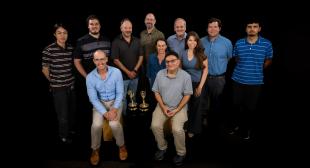Local Town Could Make California a Green Energy Leader, Professors' Report Says

A proposed wind energy project in Morro Bay will create 24,000 jobs during construction and 600 annual jobs over the next 25 years, making the small seaside town a leader in U.S. wind energy generation, according to a new report by two professors in Cal Poly’s Orfalea College of Business.

“The three projects in Morro Bay are really the linchpin to the transition to California's transition to green energy,” said Cyrus Ramezani, a finance professor, who co-authored of the 86-page report detailing the economic impact of these development projects and identifying the types of jobs that will be created.
California will rely on offshore wind energy to achieve its renewable energy goals. And, according to the Los Angeles Times, the state aims to generate 2,000 to 5,000 megawatts of offshore wind energy by 2030 and 25,000 megawatts by 2045.
Stretches of coastline in Humboldt County and Morro Bay will play a crucial role for achieving those goals. The U.S. Bureau of Ocean Energy Management, or BOEM, has designated areas off coastlines in both areas for future wind energy development.
But Morro Bay, which has a larger generation potential and readily available access to the electric grid thanks to a former waterfront powerplant built in the 1950s, is likely to be first. As Ramezani and co-author Mahdi Rastad concluded in their detailed report, the wind energy in Morro Bay, a city of about 11,000, would be unique in that it would feature floating turbines — not bottom-fixed turbines that require drilling into the seabed.

“Central Coast projects are going to provide the test grounds for these new and evolving floating offshore technologies,” Ramezani said.
With such new technology, Ramezani said, little was known about the types of skills that were needed. So their report, sponsored by the California Workforce Development Board, set out to determine what jobs would be created and identify potential labor gaps at the state and county levels.
“There will be a whole lot of work for manufacturing and construction,” Ramezani said. “These are really good, well-paying long-term jobs.”
The types of jobs created will include wind turbine service technicians, metal fabricators and fitters, welders, ship boat captains and more, according to the report.
The future of the county’s current energy producer, the Diablo Canyon nuclear power plant, is uncertain and a closure could affect hundreds of high-paying jobs in the county. While a shutdown would likely have a significant impact on the local economy, Ramezani said the Central Coast wind energy projects represent a potential bountiful job replacement, right around the time Diablo could potentially shutter.
Three companies won bids to develop the energy in Morro Bay, which would feature turbines more than 20 miles away from the coast.
The three companies, which are visiting Cal Poly on June 1, still have to submit their plans to the federal government, and environmental impact reports will need to be completed, which could involve Cal Poly scientists, Ramezani said. Energy production could begin at the end of the decade.




